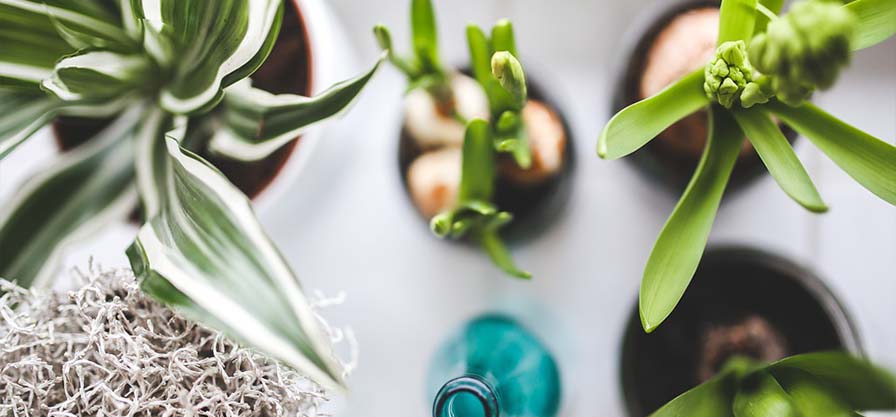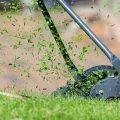Table of Contents
One fantastic way to breathe some life and color into your living space is to fill it with plants.
How about if you don’t have the time or inclination to look after them, though? Luckily, there’s a vast array of non-needy plants you can use to brighten up the inside of your house.
Let’s get straight down to business with 8 extremely low-maintenance houseplants…
Easy-Care Houseplants

Topping most lists of easy-care houseplants is the glorious and tropical philodendron.
There are about 900 species of this flowering plant from the arum family. It originated in both North and South America and you can now readily find philodendrons worldwide.
A few species are poisonous to cats so do your homework if you’ve got felines at home.
- Caring For Philodendrons: Philodendrons can survive plenty of neglect and thrive even when light levels are low. Ideally, give them plenty of indirect sunlight. Yellow leaves indicate too much sunlight, elongated stems not enough. Let the upper inch of soil dry out between waterings. Use a balanced fertilizer monthly in the warmer months and every 2 months when the mercury dips

The snake plant is a great way of improving indoor air quality by purifying the atmosphere.
Pet owners beware: the snake plant is considered poisonous for cats and dogs so sidestep this if you have animals at home.
Also known as the Good Luck Plant or mother-in-law’s tongue, this plant has striking lines and is extremely hardy. These plants grow well even if you forget all about them. They’re ideal for anyone with black thumbs and a busy lifestyle.
- Caring For Snake Plants: Let the soil dry completely between waterings. Don’t overdo the water over winter. Indirect light works well and an all-purpose feed in the growing season gives your snake plant an added boost

Another no-no for dog lovers, the dracaena is an attractive and extremely colorful tree-like indoor plant.
Size varies considerably but the form is always upright.
Dracaena will weather most temperatures but does best at 60-70 degrees Fahrenheit in the day. This plant prefers much cooler conditions overnight but it’s very forgiving.
- Caring For Dracaenas: Make sure the soil is always moist without allowing it to get soggy. Yellowing or drooping leaves are a sign you’ve overwatered. Balanced fertilizer on a regular basis is key for effective growth. Reduce feeding to monthly over fall and cut out the fertilizer completely in the winter months

A weeping fig makes a real statement indoors.
With copious bright green leaves and very delicate branches, weeping figs work out in the garden not just indoors.
You can get this plant with a braided trunk where several young trees are trained together. The overall effect is a conversation piece and looking after weeping figs couldn’t be simpler…
- Caring For Weeping Figs: Let the soil dry out nicely before you break out the watering can again. Indirect and fairly bright light brings out the best in weeping figs. You should strive to keep this plant away from sharp drafts. Flourishing at anywhere from 60 to 75 degrees Fahrenheit, weeping figs are flexible in the extreme

Another tree-like plant up next, Norfolk Island Pines can reach hundreds of feet in their natural habitat but inside rarely grow beyond 10 feet tall. This plant works best in larger houses or apartments with high ceilings.
If you want to add an element of texture and style to your room without the expense of redecorating, Norfolk Island Pines are a smart choice.
- Caring For Norfolk Island Pines: As with most of these low-maintenance houseplants, you can allow the soil to dry out so you’re not endlessly watering. Bright light is most effective for proper growth. Watch out for spider mites if the air is too dry

Aloe is renowned for its medical properties but it’s also a wonderful addition to your indoor garden for its unique aesthetics.
As a succulent – watch out for our forthcoming article on these – aloe copes admirably with dry conditions.
Unfortunately, aloe is another one of these plants that you’d be advised not to choose if you have cats or dogs at home.
- Caring For Aloes: Water on an infrequent basis and expose your aloe to as much indirect, filtered sunlight as possible. Beyond that, it’s a case and set and forget… Just don’t forget it has spikes! On older plants, pricks from these can be fairly painful

Hoya carnosa, also known as the wax plant, couldn’t be any simpler to grow. It demands absolutely no skill but rewards you with vibrant green vines studded with flashes of color.
Star-shaped flowers make a glorious focal point and can brighten up a dull space in fine style. Blooming often takes some time so be patient.
- Caring For Wax Plants: You can keep your hoya in the same pot for years. Use a planter with plenty of drainage. Under no circumstances water wax plants too much. This is great news for anyone seeking a low-maintenance plant. Use a commercial potting soil with perlite in it for best results

Last up is the mighty rubber plant, ficus elastica.
These plants can grow considerably over the course of a few years so you’ll enjoy a changing landscape indoors with no hard work to accompany it.
As far as low-maintenance plants go, rubber plants take some beating.
- Caring For Rubber Plants: Do not overwater your rubber plant. This is the most common cause of problems. Keep it moist, though. You can use a spray to mist the leaves. Wipe them down with a damp cloth and that’s as much effort as you’ll need to put in
A Final Word
We hope this list of low maintenance houseplants has given you plenty of inspiration. Pick one or two and give your interior a shot of color without needing to repaint or redecorate.
Drop us a line if you have any questions or feedback and come back soon!

